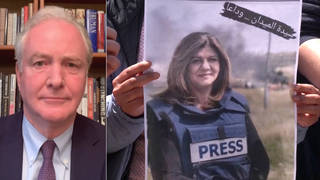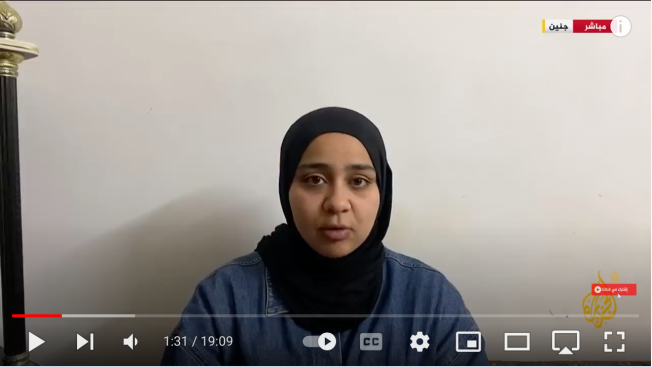Washington, D.C., May 10, 2024—Two years after the Israeli military killing of Palestinian American journalist Shireen Abu Akleh, the Committee to Protect Journalists is deeply alarmed at the continued lack of accountability in the case. CPJ calls on the U.S. Federal Bureau of Investigation to release a timeline for the conclusion of its now 18-month investigation into the killing, on the International Criminal Court to investigate the case as the Abu Akleh family and her employer, Al Jazeera, have requested, and on Israel to cooperate.
“Israel continues to shield itself from accountability by deliberately refusing to cooperate with the FBI and by indicating it won’t let its soldiers be questioned before the International Criminal Court should it open an investigation into Shireen Abu Akleh’s killing,” said CPJ Program Director Carlos Martínez de la Serna in New York. “It is time to break Israel’s longstanding impunity in journalist killings, which have only multiplied in the Israel-Gaza war. The FBI needs to disclose a timeline for the conclusion of its investigation, and Israel must cooperate with the FBI probe and any future ICC probe.”
Last November, the U.S. Department of Justice notified Israel of the FBI investigation, and Israel said it would not cooperate with the probe. The FBI has not publicly released any findings nor has the investigation led to any statements of responsibility or arrests.
In 2022, Abu Akleh’s family and her employer, Al Jazeera, submitted requests for the ICC to investigate and prosecute the killing. At the time of the Al Jazeera filing in December 2022, Israel’s then-Prime Minister Yair Lapid, said that “no one will interrogate IDF soldiers.” Israeli Prime Minister Benjamin Netanyahu has not commented on the Abu Akleh filings.
Multiple independent investigations into Abu Akleh’s May 11, 2022, killing concluded that the veteran reporter – a household name in the region – was shot by a member of the Israel Defense Forces, which said its troops were in the area “to arrest suspects in terrorist activities.” Some of those in-depth analyses, including one by CNN, said there was evidence that Abu Akleh was deliberately targeted. A U.N. commission also said Israel “intentionally or recklessly” killed her.
In September 2022, the IDF issued a statement on its internal probe which concluded that there was a “high possibility” that Abu Akleh was “accidentally” killed by Israeli forces. The IDF declined to open a criminal investigation into the killing. In May 2023, IDF Chief Spokesperson Daniel Hagari apologized for Abu Akleh’s death on CNN.
Hagari’s apology came days after CPJ published a report, “Deadly Pattern,” showing that Israel had failed to hold its soldiers to account for 20 journalist killings in 22 years. Since the report’s publication, Israel has killed at least 92 Palestinian journalists and three Lebanese journalists amid the ongoing Israel-Gaza war.
This content originally appeared on Committee to Protect Journalists and was authored by Committee to Protect Journalists.
This post was originally published on Radio Free.

